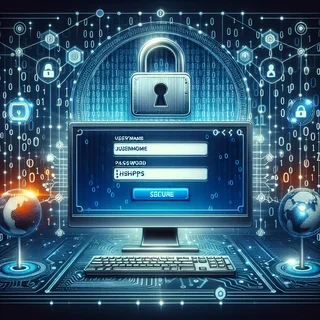Discover how implementing two-factor authentication can significantly boost the security of your WordPress site, protecting it from unauthorized access and cyber threats.
Posts - "Security"
Articles tagged with Security.
-
 Enhancing WordPress Security with Two-Factor Authentication
Enhancing WordPress Security with Two-Factor Authentication -
 Enhancing Your WordPress Performance with Cloudflare Integration
Enhancing Your WordPress Performance with Cloudflare IntegrationExplore how integrating Cloudflare with WordPress can significantly boost your site's performance, enhance security, and improve user experience. Ideal for digital marketers and business owners.
-
 Integrating OAuth2 with WordPress: A Comprehensive Guide for Secure Authentication
Integrating OAuth2 with WordPress: A Comprehensive Guide for Secure AuthenticationLearn how to implement OAuth2 on your WordPress site to enhance security and streamline user authentication. This guide covers practical steps and best practices for setting up an OAuth2 server.
-
 Mastering Support for Multiple PHP Versions in WordPress Development
Mastering Support for Multiple PHP Versions in WordPress DevelopmentExplore strategies to effectively manage and support multiple PHP versions in WordPress, ensuring compatibility and security for your websites.
-
 Enhancing User Experience with Single Sign-On Integrations in WordPress
Enhancing User Experience with Single Sign-On Integrations in WordPressExplore how Single Sign-On (SSO) integrations can streamline user access and enhance security in WordPress sites, ideal for marketing agencies and digital business owners.
-
 Enhancing Security with Effective WordPress Responsible Disclosure Processes
Enhancing Security with Effective WordPress Responsible Disclosure ProcessesExplore how implementing responsible disclosure processes in WordPress can safeguard your digital assets and enhance security. This guide offers practical steps for agencies and business owners.
-
 Enhancing Security with Nonces in WordPress AJAX Requests
Enhancing Security with Nonces in WordPress AJAX RequestsLearn how to strengthen your WordPress site's security by properly implementing nonces in AJAX requests. This guide covers practical tips and detailed examples for developers and digital marketers.
-
 Mastering Custom REST API Authentication in WordPress
Mastering Custom REST API Authentication in WordPressExplore custom REST API authentication methods in WordPress to enhance security and functionality in your digital projects. Learn practical strategies for implementing secure API endpoints.
-
 Why and How to Disable XML-RPC in WordPress for Enhanced Security
Why and How to Disable XML-RPC in WordPress for Enhanced SecurityLearn why disabling XML-RPC in WordPress is crucial for security and how you can easily achieve it to protect your site from potential threats.
-
 Essential Security Practices for WordPress REST API Responses
Essential Security Practices for WordPress REST API ResponsesLearn how to secure your WordPress REST API responses with practical tips and best practices. This guide is essential for developers and digital business owners.
-
 Mastering WordPress Management: How to Create Custom User Roles
Mastering WordPress Management: How to Create Custom User RolesLearn how to enhance your WordPress site's functionality and security by creating custom user roles. This guide provides step-by-step instructions tailored for marketing agencies and digital business owners.
-
 Crafting Effective Incident Response Playbooks for WordPress Sites
Crafting Effective Incident Response Playbooks for WordPress SitesLearn how to develop and implement incident response playbooks to quickly manage and mitigate issues on your WordPress website, ensuring minimal downtime and enhanced security.
-
 Enhancing WordPress Security: A Deep Dive into Hardening WP-Config Security Keys
Enhancing WordPress Security: A Deep Dive into Hardening WP-Config Security KeysLearn how to strengthen your WordPress site's security by effectively hardening the wp-config security keys. Ideal for marketing agencies and digital business owners.
-
 Securing WordPress: How to Restrict Access to wp-admin
Securing WordPress: How to Restrict Access to wp-adminLearn effective strategies to secure your WordPress site by restricting access to the wp-admin directory. Protect your site from unauthorized access and enhance security.
-
 Mastering Secret Management in WordPress CI/CD Workflows
Mastering Secret Management in WordPress CI/CD WorkflowsExplore the best practices for secret management in WordPress CI/CD environments, ensuring secure and efficient development processes.
-
 Enhancing Security with WordPress App Passwords: A Guide for Agencies
Enhancing Security with WordPress App Passwords: A Guide for AgenciesLearn how to secure your WordPress sites using app passwords. This guide provides essential tips and strategies for agencies and digital business owners to protect their online assets.
-
 Enhancing Security While Uploading SVGs in WordPress
Enhancing Security While Uploading SVGs in WordPressLearn how to securely handle SVG file uploads in WordPress, including steps to mitigate risks and implement safety measures for better website security.